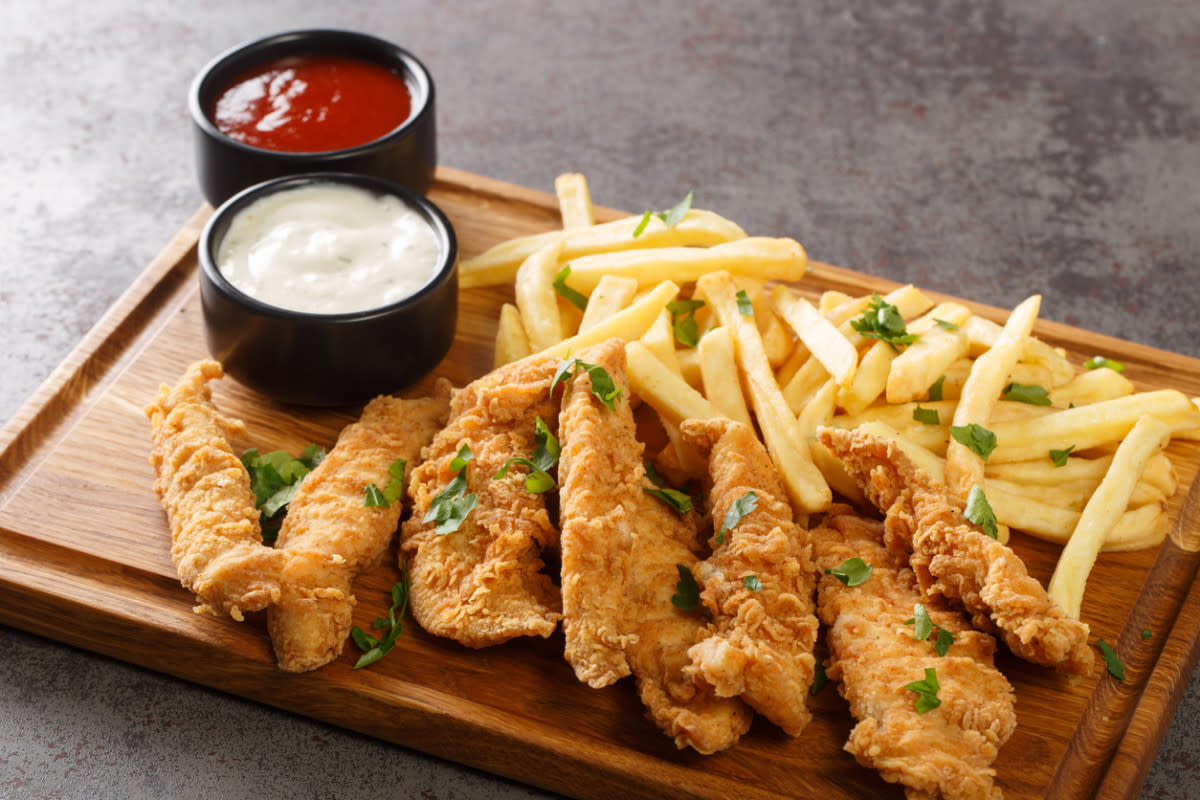How to Make Chicken Tenders That Taste Like They Came From a Restaurant

Chicken tenders are one of those menu items that are typically a go-to for kids, but if I find a spot that can turn out a great chicken tender they can be my go-to order too. And is it just me, or do restaurant chicken tenders just taste better than what most of us cook at home?
The trick to making restaurant-style chicken tenders comes down to a combination of factors, including spices, brines, cooking method (i.e., frying, air frying) and how long the chicken marinates. And, oh yeah, don’t overcook your chicken, either. Professional kitchens have access to special ingredients and professional equipment, but that doesn't mean that you can't make a great chicken tender at home.
If you’ve been struggling to make flavorful and juicy chicken tenders at home, there’s a not-so-new ingredient that can save you some cash and make your DIY tenders the new go-to. What’s the trick? The secret weapon is using pickle juice as a brine. Its BFF buttermilk also keeps the party going.
To see if I could replicate a restaurant-style chicken tender at home, I tried a recipe from grillin_with_dad. His YouTube video uses a pickle juice brine that looked too good to miss.
Related: How to Make a Quesadilla That Tastes Like it Came From a Restaurant
How to Make Restaurant-Style Chicken Tenders
The video starts by combining the following in a large bowl: 3 eggs, 2 cups buttermilk, 1 cup pickle juice, 1/2 cup hot sauce? and 1 tablespoon each of cayenne pepper, chili powder, paprika, garlic powder, onion powder, salt and black pepper?. Here are the remaining steps and some tips to keep in mind.
Make time to brine. With the wet brine ready, add your chicken tenders and refrigerate them covered for one to four hours to give the brine time to flavor and tenderize the meat. I used a 1.10-pound package of boneless, skinless chicken tenderloins, which equaled 9 pieces.
Season all the components. Chefs know that seasoning everything is the one of the keys to great food. When home cooks do something like bread chicken tenders they sometimes forget to season the breading mixture. That's not a problem in this recipe. While the chicken marinades, you'll mix 2 cups of all-purpose flour with 1 cup corn starch and 1 tablespoon each of cayenne pepper, chili powder, paprika, garlic powder, onion powder, salt and black pepper?. The spice mix mirrors the wet marinade, which carries the flavors through.
It's ok to double dip. Double dipping is usually not a great idea, but the double dip here means breading each chicken tender twice to crank up the crunch. To do it, place the bowl of wet marinade (with the chicken) and dry mix side by side. Take one tenderloin from the wet marinade, dredge it into the flour mix, then add it back to the wet, then back to the flour. Place the tenderloins on a baking sheet lined with a wire rack. Let them sit for 10–15 minutes.
Do a temperature check. Great fried food often comes down to the temperature of your frying oil. You want it to be hot enough to cook and brown the food quickly. If your oil isn't hot enough you can end up with a greasy mess. To make these tenders, use a neutral oil to deep-fry the chicken at 375° for about 5–6 minutes total. I used a small cast iron skillet, which was perfect for frying two at a time. Watch the oil because, after the first couple of batches, the crust started to darken. Use an instant-read thermometer to make sure the chicken registers 165° in the center.
Related: The Secret Ingredient for Making Salmon That Tastes Like It Came From a Restaurant
Helpful Notes for Making Restaurant-Style Chicken Tenders
Pick your pickle. Any pickle juice works. I used Vlasic hamburger dill pickle juice, but I can only imagine the brine variations that could yield from a dill, hot or garlic brine mix. Pickle juice tenderizes chicken, adds flavor and helps retain moisture.
No buttermilk? No problem. Because I didn’t have any buttermilk handy, I decided to make my own. Making buttermilk is super easy—just add 2 tablespoons of white distilled vinegar or lemon juice to 2 cups of whole milk. Buttermilk also acts as a tenderizer, so you won’t end up with tough chicken.
Glaze them (or skip it). In the video, these tenders were glazed with a mixture of honey and hot sauce. I found them just as delicious eaten alone. The crust was thick and crunchy. There was a slight, but noticeable, taste of the pickle brine, but it wasn’t overpowering. The cayenne and hot sauce gave the tender a little kick, but it wasn’t overpowering. Next time, I’d love to marinate the chicken for the full 4 hours (instead of the 90 minutes I did) to compare the taste or toss them in buffalo sauce.
Up next: The Secret Ingredient for Making Jarred Pasta Sauce Taste Like It Came From an Italian Restaurant
